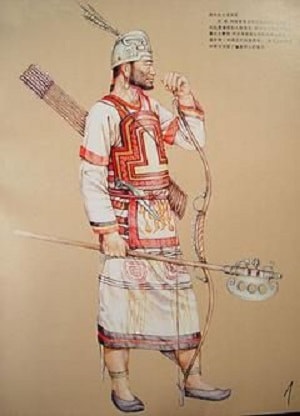Shang Dynasty Introduction
Following China's first dynasty, the Xia Dynasty, and ruling over China for over 500 years were the emperors of the Shang Dynasty (also called Yin Dynasty). Exactly when this ancient Chinese culture began and when it ended is not clear. Traditionally the reign of this great dynasty was believed to be from 1766 BC to 1122 BC; however some historians now believe a more accurate range is from 1556 BC to 1046 BC. While the exact dates of the Shang Dynasty are not known there is much information we do know about this early Chinese society. Below we list many interesting Shang Dynasty history facts; some of which come from archaeological discoveries and some of which have been documented in ancient text such as the Bamboo Annals. As in trying to understand many ancient civilizations it is often difficult to distinguish true facts from legends and fables.Click here for a great selection of Amazon.com books about the Shang Dynasty.
List of Shang Dynasty Facts
- The Shang Dynasty began when Cheng Tang overthrew Emperor Jie of the Xia Dynasty in 1675 BC.
- Although proceeded by the Xia Dynasty the Shang dynasty marks the beginning of recorded history in China; it is the first dynasty in which the people produced written archaeological evidence.
- The Shang Dynasty was the first dynasty to unite a large region of current day China under one ruler.
- The Shang Empire was located mainly along the Yellow River in North East China.
- The Shang dynasty controlled parts of eastern and northern China. At its peak it controlled approximately 482,628 square miles (1,250,000 square kilometers). Modern day China is much larger.
- Many cities served as the capital of this dynasty during the centuries it ruled. In the 14th century BC, just north of the modern day city of Anyang, the emperor Pangeng of the Shang Dynasty created the capital city of Yin. Yin was in fact the first stable capital in the history of China. This is why the Shang Dynasty is also referred to as the Yin Dynasty. At this site, called the Ruins of Yin, numerous tombs and other structures have been unearthed. Numerous artifacts have been discovered at this site including thousands of oracle bones.
- The Shang developed a very accurate calendar system that had a 360-day year consisting of 12 months with 30 days each. Months were inserted in the calendar when necessary to adjust the calendar year to the solar year.
- These ancient peoples main food source came from farming. Their main crops were millet, wheat, barley, and rice. They were also known to hunt for food. Later in the dynasty they learned to domesticate animals including sheep, pigs, and oxen.
- The social pyramid of the Shang Dynasty consisted of the king (emperor) at the top, with priest and nobility below him, followed by merchants and farmers at the bottom. The majority of the people were farmers.
- As with the ancient Egyptians and several other ancient civilizations the emperor, and also other nobility, were buried with great riches and items they could use in the afterlife.
- During this period the use of bronze became very popular. The people of this period used bronze to make objects ranging from jewelry to weapons.
- The people of the Shang Dynasty built their houses and other buildings using wood and mud.
- The last emperor of the Shang Dynasty was Di Xin. At the Battle of Muye he was defeated and is believed to have committed suicide. This ushered in the Zhou dynasty.
- The Shang Dynasty ended when forces from the state of Zhou captured the Shang capital city.
